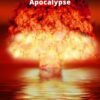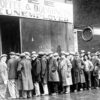Analysis: The ripples of the war Russia says isn’t a war
![]()
Analysis: The ripples of the war Russia says isn’t a war
By TAMER FAKAHANYOctober 20, 2022

1 of 10
FILE – Russian rockets are launched against Ukraine from Russia’s Belgorod region at dawn in Kharkiv, Ukraine, Aug. 15, 2022. Eight months after Russian President Vladimir Putin launched an invasion against Ukraine expecting a lightening victory, the war continues, affecting not just Ukraine but also exacerbating death and tension in Russia among its own citizens. (AP Photo/Vadim Belikov, File)
LONDON (AP) — It’s not a war, Vladimir Putin said then — and says now. It’s a “special military operation.” In most every sense of the term, though, Russia’s war in Ukraine is precisely that.
And when a nation is at war, even if it claims it is not, the reverberations back home — the place where the conflict was first conceived — can be far-reaching.
Eight months after Russia launched a war in February expecting a lightning victory against neighboring Ukraine, an independent nation from which it already annexed Crimea in 2014, tens of thousands of people have been killed in Ukraine. Millions are displaced from their homes. A brutal winter approaches. Nuclear fears are spiking. And the Kremlin is now using killer drones to degrade Ukraine’s power supply, plunging more hundreds of thousands into darkness.
Four more regions of Ukraine have been illegally annexed in the last month, though they are far from fully under Russian control, and Putin declared martial law in them on Wednesday.
ADVERTISEMENT
Even without calling it a formal war, Putin could be laying groundwork to extend these restrictive measures throughout Russia. A clause in the decree allows measures envisaged by martial law to be imposed in any Russian region “when necessary.” What’s more, officials in multiple Russian regions rushed to assure the population after Putin’s announcement that they’re not planning to impose additional measures.
RUSSIA-UKRAINE WAR
EXPLAINER: What would retreat from Kherson mean for Russia?Weapons shortages could mean hard calls for Ukraine’s alliesIndia launches 36 internet satellites delayed by Ukraine warUkraine orchestra’s leader debuts at Met with Russian opera
The war that isn’t called a war by Moscow has also exacerbated death and tension in Russia among its own citizens. There are huge numbers of dead and wounded Russian soldiers, many ill-equipped and ill-commanded, sent to the front to die essentially as cannon fodder.
The Soviet Union lost 10,000 to 15,000 men in Afghanistan out of a much larger population base, says Samantha de Bendern, an associate fellow in the Russia and Eurasia Program at the international affairs think tank Chatham House. And, she told The Associated Press, even the most conservative model suggests 50,000 men dead in Ukraine. That’s between three and five times greater than what the Soviet Union lost in Afghanistan in nearly 11 years.
“I can’t see how a society can sustain that,” de Bendern said.
The undeclared war ripples elsewhere, too.
ADVERTISEMENT
When a leader starts losing on the battlefield and announces a “partial” mobilization of reservists, hundreds of thousands of Russian families are immediately impacted by a conflict they may or may not have supported.
Putin’s decree doesn’t outline any specific criteria for who should be mobilized and doesn’t spell out how many people should be drafted. The contrast with highly motivated Ukrainians defending their nation could not be more stark. And when thousands of Russian men don’t want to be conscripted for an undeclared war, they flee the country by air, sea and land, across borders to wherever will take them.
Antiwar and anti-mobilization protests have been ruthlessly suppressed. Not all have been sympathetic to those trying to leave Russia, and have shut their borders. Leaders of Baltic states wondered aloud: Where were their voices against the war as it raged?
ADVERTISEMENT
Russia has been mobilizing from various republics and ethnicities who do not necessarily share the Kremlin’s war aims and politics, and there have been violent incidents at training or recruiting stations. Last week, a shooting left 11 dead and 15 others wounded in the Belgorod region in southwestern Russia. The two attackers — from a former Soviet nation that Russian authorities didn’t identify — fired on other soldiers during target practice and were killed by return fire.
In another incident in Siberia weeks earlier, a local commandant was shot and gravely wounded by a young man whose friend had been called up. The gunman had shouted: “No one will fight. … We will all go home now.”
In contrast to the daily bombardment Russia has rained upon Ukraine, military attacks by Kyiv on Russia itself have been significantly less deadly. The United States has been cautious about supplying Ukraine with any weaponry that could have enough range to strike inside Russia, lest it be drawn into a direct conflict. But border areas in the Belgorod, Kursk and Bryansk regions of Russia have been shelled since the start of the invasion.































![Lieutenant-Colonel Robert Rogers (7 November 1731 – 18 May 1795) was a British Army officer and frontiersman. Born in Methuen, Massachusetts, he fought in King George’s War, the French and Indian War and the American Revolutionary War. During the French and Indian War, Rogers raised and commanded Rogers’ Rangers, a ranger unit trained for carrying out asymmetric warfare.[2][3](https://www.cowboyron.com/wp-content/uploads/2022/05/1262463_580743685323360_2133853937_o1-1-150x150.jpg)

















![Billie Joe Armstrong & Norah Jones – Silver Haired Daddy Of Mine [Music Video]](https://www.cowboyron.com/wp-content/uploads/2022/11/Al_St._John1-100x100.jpg)

























